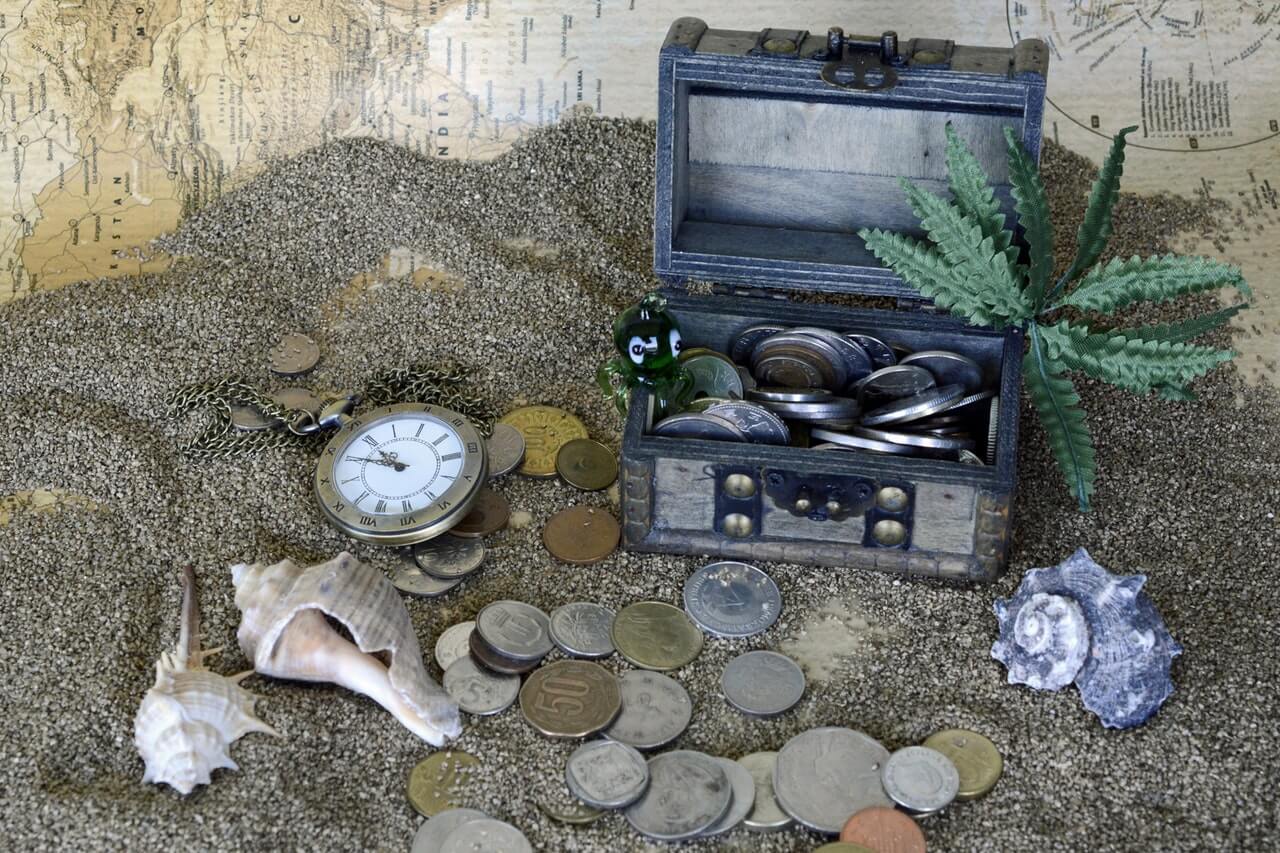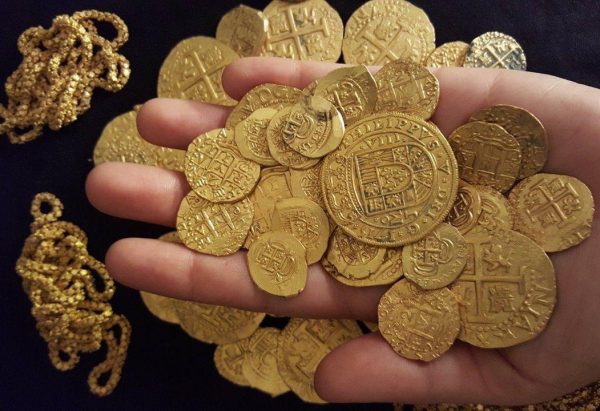Prospectors and treasure seekers the world over have always been obsessed with uncovering a major find. There is always more treasure out there to be discovered, and for a great many seekers, much of it has been worth the effort and investment of time and money when something of great monetary or cultural value gets dug up.
But, if you are not convinced, you might be the type that needs hard evidence before you see the value in prospecting, either as a hobby or a career.
So, to help you see the possibilities out there, here are some of the most valuable tfreasures ever to be discovered with a metal detector.
From the cold fingers of pirates
In 1952, historian and pirate specialist, Edward Rowe Snow made off to an island just off the coast of Nova Scotia with an aged map and a metal detector in hopes of uncovering a historical find, and discovered more than he could have hoped for.
His metal detector, historian knowledge and of course the map, led him to an 18th century stash of Portuguese and Spanish metal detector being eerily clutched in the long dead hand of a skeleton.

The Tip of a Treasure Trove
Not all valuable finds happened generations ago, in fact one major discovery took place in 2009 when Terry Herbert took his metal detector to scour farmlands near his home in Staffordshire. Initially he uncovered a handful, then a sack full of gold artefacts.
This lead to an expedition being launched that would uncover an early Anglo-Saxon hoard of gold and silver containing some 3500 pieces and valued at around $5.3 million.
52000 Crisp  Roman Coins
Roman Coins
For treasure hunter Dave Crisp, a once in a lifetime find came in the form of over 21 roman when hunting on a nearby farm in the UK.
Upon deeper inspection, Dave discovered a much larger hoard of coins in a 160kg pot that contained 52,500 roman coins. His find was estimated to have a value of around $1 million, but also served as a testament to the widespread nature of the Roman empire.
Never too Young for a Major Find
At the age of 3, budding treasure hunter James Hyatt discovered a gold locket to the value of £2.5 million while out on his first hunt with his father. It was a 16th century gold locket with a depiction of the Virgin Mary, and was declared a treasure by the British Museum.
The locket, although retaining most of its value from its age and gold content, is believed to have once held parts of Christ’s thorn crown from his crucifixion, awarding the item with a staggering amount of value.
Gold, Silver and Precious Stones
One of the most valuable finds ever to be made was discovered by 55-year-old Terry Herbert when he used his metal detector to locate a stash of Anglo Saxon treasures that was to be valued to a seven-figure sum. The stash contained over 650 gold artefacts, 530 silver ones, as well as coins and objects inlaid with precious stones.
Besides its monetary value, the find also helped us understand a little bit more about the world-view of the Anglo-Saxon people, which was enough to declare this treasure as one of the most valuable modern finds ever.
Uncovering pilfered Loot
In 1946, a group of postal inspectors used a mine detector borrowed from the U.S. Army to scour the yard of a deceased postal employee who had allegedly stolen large sums of money some years before.
They uncovered the money stashed inside of cans and jars which were held inside a length of pipe and buried some 9 feet underground (that’s 3 feet deeper than the expired pilferer’s grave). The loot totaled up to around $153,000. It’s just too bad that the postal worker never got to spend his pilfered loot.
Any Color you want: As long as it’s Black
In the late 60’s a small group of people from Detroit, one of which was armed with a metal detector discovered a buried Model T ford that had apparently been buried in a man’s backyard somewhere around 1926.
The car had allegedly been buried in order to preserve it for future generations to enjoy. Unfortunately, whoever it was who had done this, didn’t account for the damage that the vehicle would face thanks to many years of being underground. Nevertheless, it’s discovery was an interesting one since it was found some 40 years later.
Despite its dicey condition, it could still be instantly identified as a Model T and an intriguing piece of history.

A golden Chalice in Kent
In 2001, amateur archaeologist, Cliff Bradshaw, discovered a moderately damaged gold cup from the Bronze Age, buried in the English countryside of Kent. Although it was slightly damaged before the find, the fact that only around 7 items of this type have ever been found in Europe caught the attention of the British Museum.
They purchased the artefact from Bradshaw, as well as the owners of the property where it was discovered for $520,000, despite the fact that it had been damaged by a plow some time before its discovery.
Not just a Golden Nugget
Near the end of the 80’s, an amateur prospector from Mexico decided to try his luck with an inexpensive metal detector that he had purchased from a radio shack by taking it out into the desert to see what he could find.
After much sifting through worthless junk, he eventually discovered a gold nugget weighing around 27 pounds. The nugget was so large, in-fact, that shortly after its discovery it became known as the Boot of Cortez.
It still holds the record for being the largest nugget ever to be uncovered in the Western Hemisphere, and was once sold at an auction for $1,533,500.

There is always more to find
We live in a world that is teaming with forgotten treasures, both large and small. So why not take your chances and go out there to seek your fortune.
All you need to do is prepare yourself by investing in a metal detector, and you could be well on your way to finding the next international treasure.

 Roman Coins
Roman Coins



